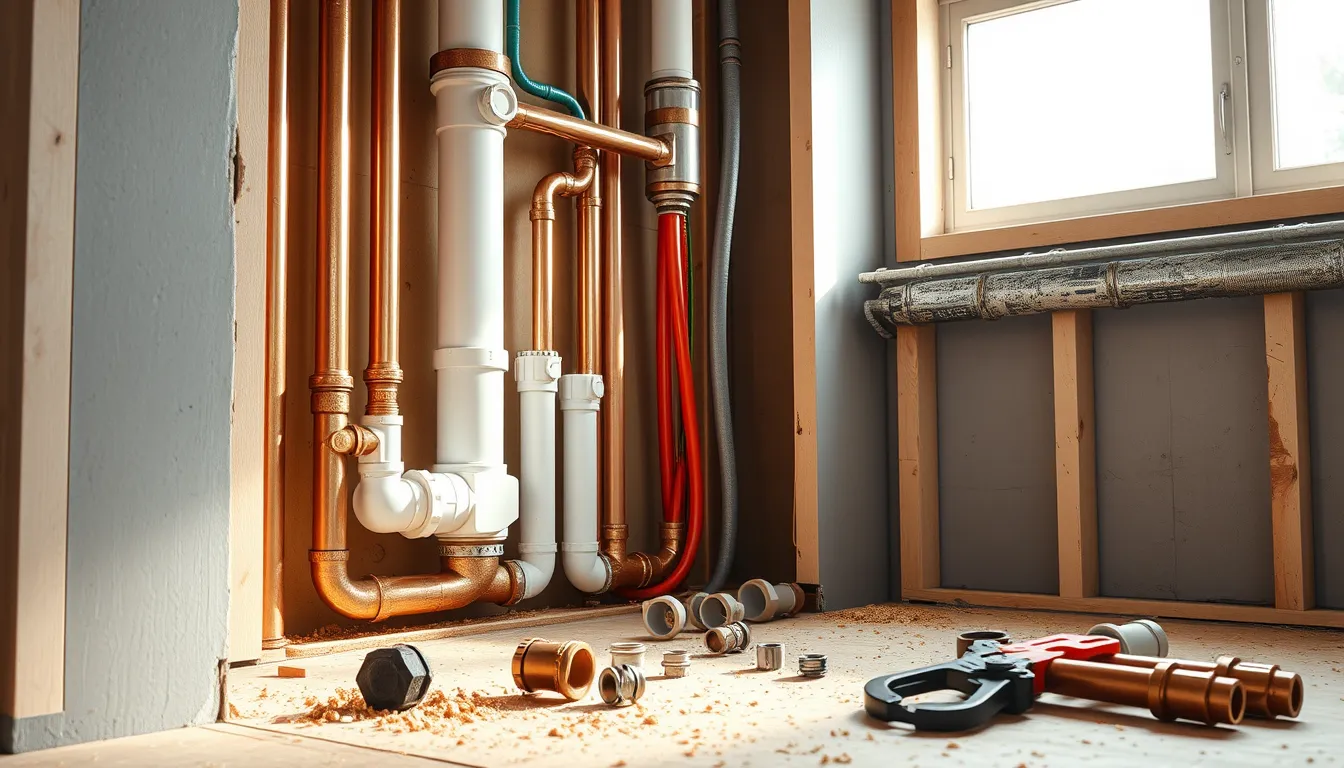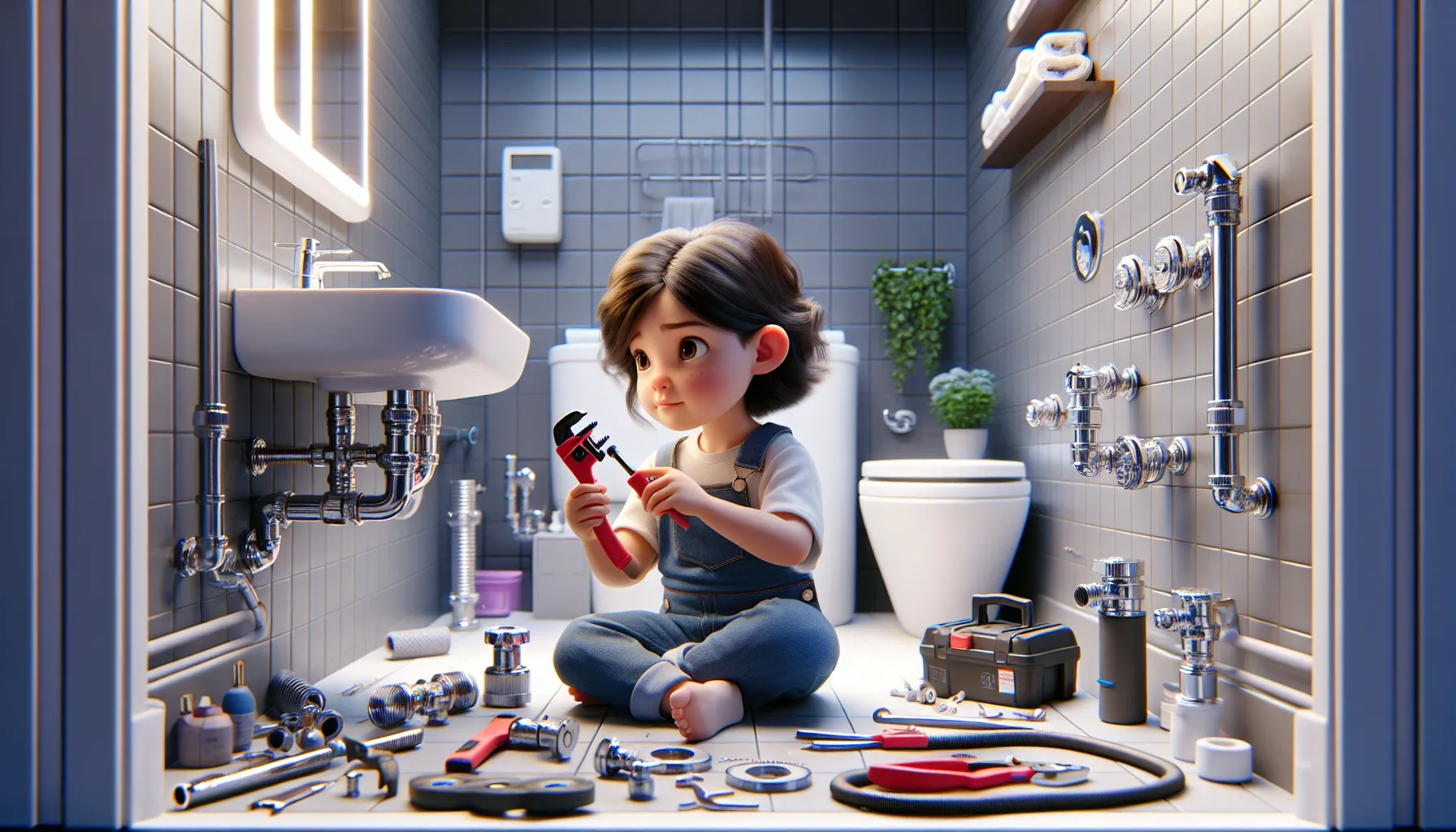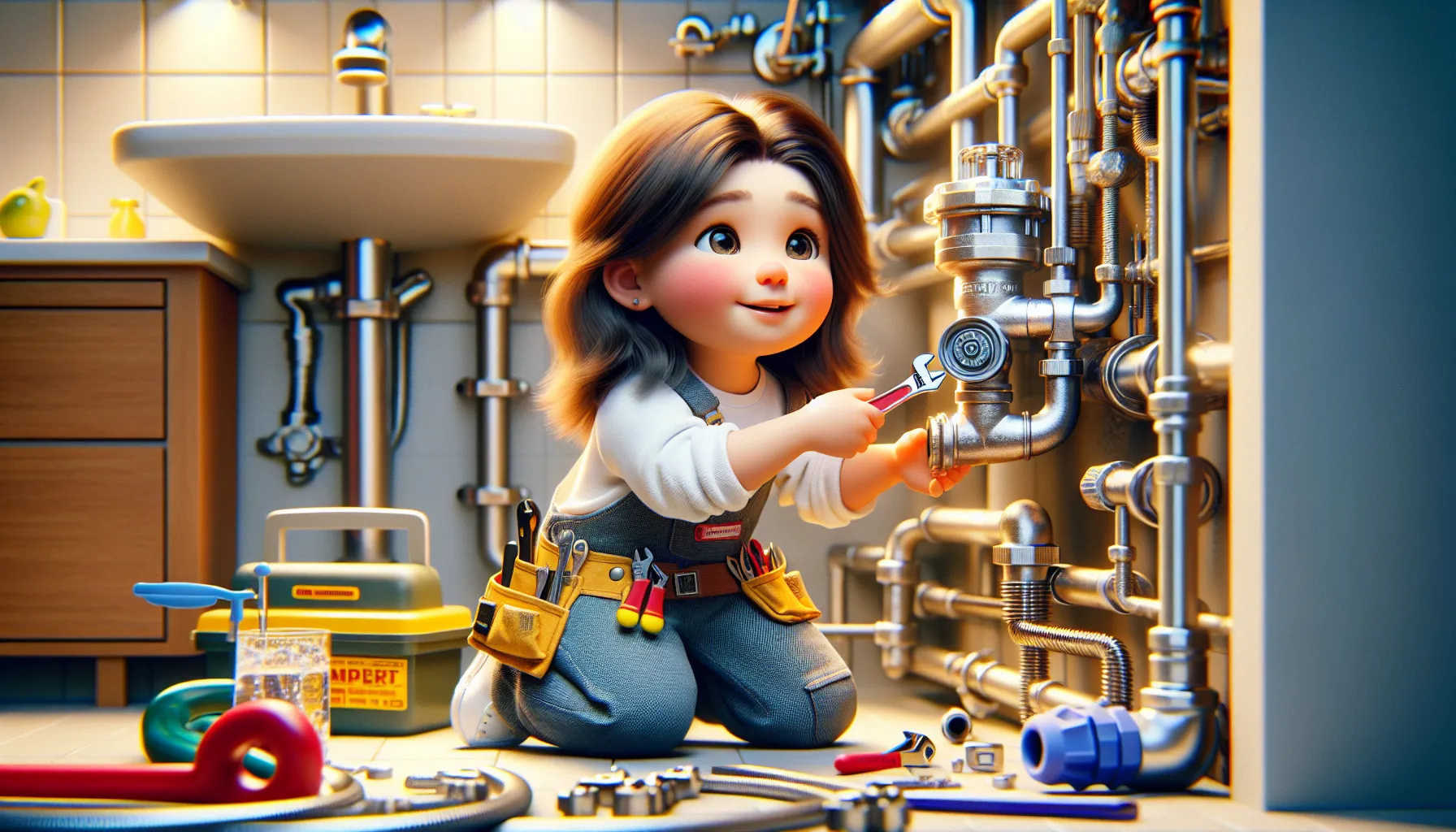Understanding the various options available is crucial for homeowners, whether you’re building a new home, renovating an existing one, or simply want to be more informed about your plumbing system. This guide will cover the most common pipe materials, their characteristics, applications, and factors to consider when choosing the right material for your home.
PVC (Polyvinyl Chloride) Pipes
PVC is one of the most widely used materials in modern residential plumbing. It’s a versatile plastic that has revolutionized the plumbing industry due to its affordability and ease of use.
Key Characteristics:
- Lightweight and easy to handle
- Resistant to corrosion and chemical degradation
- Affordable compared to metal alternatives
- Available in various sizes and fittings
- Lifespan of 50-70 years when properly installed
PVC is primarily used for drain, waste, and vent (DWV) systems in homes. It’s excellent for:
- Bathroom and kitchen drain lines
- Toilet flush pipes
- Outdoor drainage systems
- Cold water supply lines (in some regions)
Pros:
- Cost-effective
- Easy to install and repair
- Doesn’t corrode or rust
- Smooth interior surface reduces friction and buildup
Cons:
- Not suitable for hot water lines (standard PVC)
- Can become brittle in extremely cold temperatures
- Some concerns about potential chemical leaching (though modern PVC is considered safe for potable water in many jurisdictions)
Real-world example: In a typical home bathroom renovation, PVC pipes are often used to replace old cast iron drain pipes. The lightweight nature of PVC makes it easier to maneuver in tight spaces, and its resistance to corrosion ensures a longer-lasting drainage system.
Copper Pipes
Copper has been a staple in plumbing for decades and is still highly regarded for its durability and reliability.
Key Characteristics:
- Excellent durability and longevity (50+ years)
- Naturally antimicrobial
- Can withstand high temperatures and pressures
- Recyclable material
- Available in rigid and flexible forms
Copper is versatile and can be used for various plumbing tasks:
- Hot and cold water supply lines
- Refrigerant lines in HVAC systems
- Gas supply lines (where code allows)
Pros:
- Long-lasting and durable
- Resistant to corrosion in most water conditions
- Can handle extreme temperatures
- Imparts no taste to water
Cons:
- More expensive than plastic alternatives
- Requires skill to install (soldering joints)
- Can corrode in certain water conditions (e.g., highly acidic water)
Real-world example: In older homes with galvanized steel pipes, repiping with copper is a common upgrade. Plumbers often recommend copper for its longevity and ability to handle both hot and cold water, making it ideal for main water supply lines throughout the house.
PEX (Cross-linked Polyethylene) Pipes
PEX has gained popularity in recent years as a flexible and cost-effective alternative to traditional piping materials.
Key Characteristics:
- Highly flexible and easy to maneuver
- Resistant to freezing and bursting
- Available in long continuous lengths, reducing the need for joints
- Color-coded for easy identification (red for hot, blue for cold)
- Lifespan of 40-50 years
PEX is primarily used for water supply lines:
- Hot and cold water distribution
- Radiant floor heating systems
- Replacing copper pipes in retrofits
Pros:
- Easy and quick to install
- Fewer fittings required due to flexibility
- Resistant to scale buildup and corrosion
- Can expand, reducing the risk of burst pipes in freezing conditions
Cons:
- Cannot be used outdoors or in high-temperature applications
- Requires special tools for installation
- Some concerns about chemical leaching (though modern PEX is considered safe for potable water)
Real-world example: In new home construction, PEX is often the go-to choice for water supply lines. Its flexibility allows plumbers to run continuous lines from the main supply to fixtures, reducing the number of joints and potential leak points.
CPVC (Chlorinated Polyvinyl Chloride) Pipes
CPVC is an upgraded version of PVC, designed to handle higher temperatures and pressures.
Key Characteristics:
- Can handle hot water up to 200°F (93°C)
- Resistant to corrosion and chemical degradation
- Lightweight and easy to install
- Lifespan of 50-60 years
CPVC is suitable for both hot and cold water supply lines:
- Residential hot water distribution
- Industrial and commercial plumbing systems
- Replacement for copper in areas with aggressive water
Pros:
- More affordable than copper
- Can handle higher temperatures than standard PVC
- Easy to install with solvent welding
- Resistant to scale buildup
Cons:
- More expensive than standard PVC
- Can become brittle over time, especially if exposed to sunlight
- Not as flexible as PEX
Real-world example: In regions with highly corrosive water that might damage copper pipes, CPVC is often used for hot water lines. It provides a cost-effective alternative that can withstand the higher temperatures without the risk of corrosion.
Galvanized Steel Pipes
While less common in new installations, galvanized steel pipes are still found in many older homes.
Key Characteristics:
- Durable and strong
- Coated with zinc to prevent rust
- Can last 40-50 years, though often less in practice
- Heavy and rigid
Historically used for water supply lines, but now more commonly found in:
- Older homes (pre-1960s)
- Outdoor applications
- Gas supply lines
Pros:
- Strong and durable
- Resistant to physical damage
Cons:
- Prone to internal corrosion over time
- Can leach lead from older joints
- Heavy and difficult to work with
- Reduces water pressure as corrosion builds up
Real-world example: Many homeowners with galvanized steel pipes opt to replace them during renovations due to reduced water pressure and potential water quality issues. Plumbers often recommend switching to copper or PEX for improved performance and longevity.
ABS (Acrylonitrile Butadiene Styrene) Pipes
ABS is a type of plastic pipe similar to PVC but with some distinct characteristics.
Key Characteristics:
- Black in color
- More impact-resistant than PVC
- Can withstand colder temperatures than PVC
- Lifespan of 50-70 years
ABS is primarily used in drain, waste, and vent systems:
- Sewer lines
- Septic tank systems
- Vent stacks
Pros:
- More impact-resistant than PVC, especially in cold weather
- Easy to install with one-step cement process
- Lightweight and easy to handle
Cons:
- Not approved for use in all jurisdictions
- Can degrade when exposed to sunlight
- Not suitable for pressurized water supply lines
Real-world example: In colder climates, plumbers often prefer ABS for exterior drain lines due to its superior impact resistance in freezing temperatures. However, local building codes should always be consulted, as ABS is not universally approved.
Selecting the Right Pipe Material
When choosing the appropriate pipe material for your home plumbing project, consider the following factors:
- Local Building Codes: Always check your local regulations, as some materials may not be approved in certain areas.
- Water Conditions: If you have particularly acidic or hard water, some materials may be more suitable than others.
- Climate: Consider the temperature extremes in your area, especially for exterior plumbing.
- Project Type: Different materials are better suited for supply lines, drain systems, or specific applications like radiant heating.
- Budget: Consider both initial costs and long-term durability when making your decision.
- Skill Level: Some materials, like copper, require more expertise to install properly.
- Environmental Concerns: If sustainability is a priority, consider the recyclability and environmental impact of the material.
Tips from Professional Plumbers
- “Don’t mix metals in your plumbing system without proper dielectric unions to prevent galvanic corrosion.” – John, Master Plumber with 25 years of experience
- “For whole-house repiping, I often recommend a combination of materials. PEX for most supply lines due to its flexibility and ease of installation, with copper for main lines and areas where durability is crucial.” – Sarah, Residential Plumbing Specialist
- “In areas with high water pressure, make sure to install pressure-reducing valves regardless of the pipe material used. This will extend the life of your entire plumbing system.” – Mike, Plumbing Contractor
- “Always factor in future maintenance when choosing pipe materials. Some options, like PEX, can be more challenging to repair if issues arise.” – Lisa, Commercial Plumbing Expert
Conclusion
Choosing the right pipe material for your home plumbing system is a decision that impacts the efficiency, longevity, and safety of your water supply and drainage. While each material has its strengths and weaknesses, the best choice often depends on your specific circumstances, local regulations, and the advice of professional plumbers familiar with your area’s unique conditions.
Remember, while this guide provides a comprehensive overview, plumbing systems are complex and often interconnected. For major plumbing projects or whole-house repiping, it’s always advisable to consult with a licensed plumber who can assess your specific needs and recommend the best materials and solutions for your home.
By understanding the characteristics and applications of different pipe materials, you can make informed decisions about your home’s plumbing, ensuring a reliable and efficient system for years to come. Whether you’re tackling a DIY project or working with professionals, this knowledge will help you communicate effectively and make choices that benefit your home in the long run.



